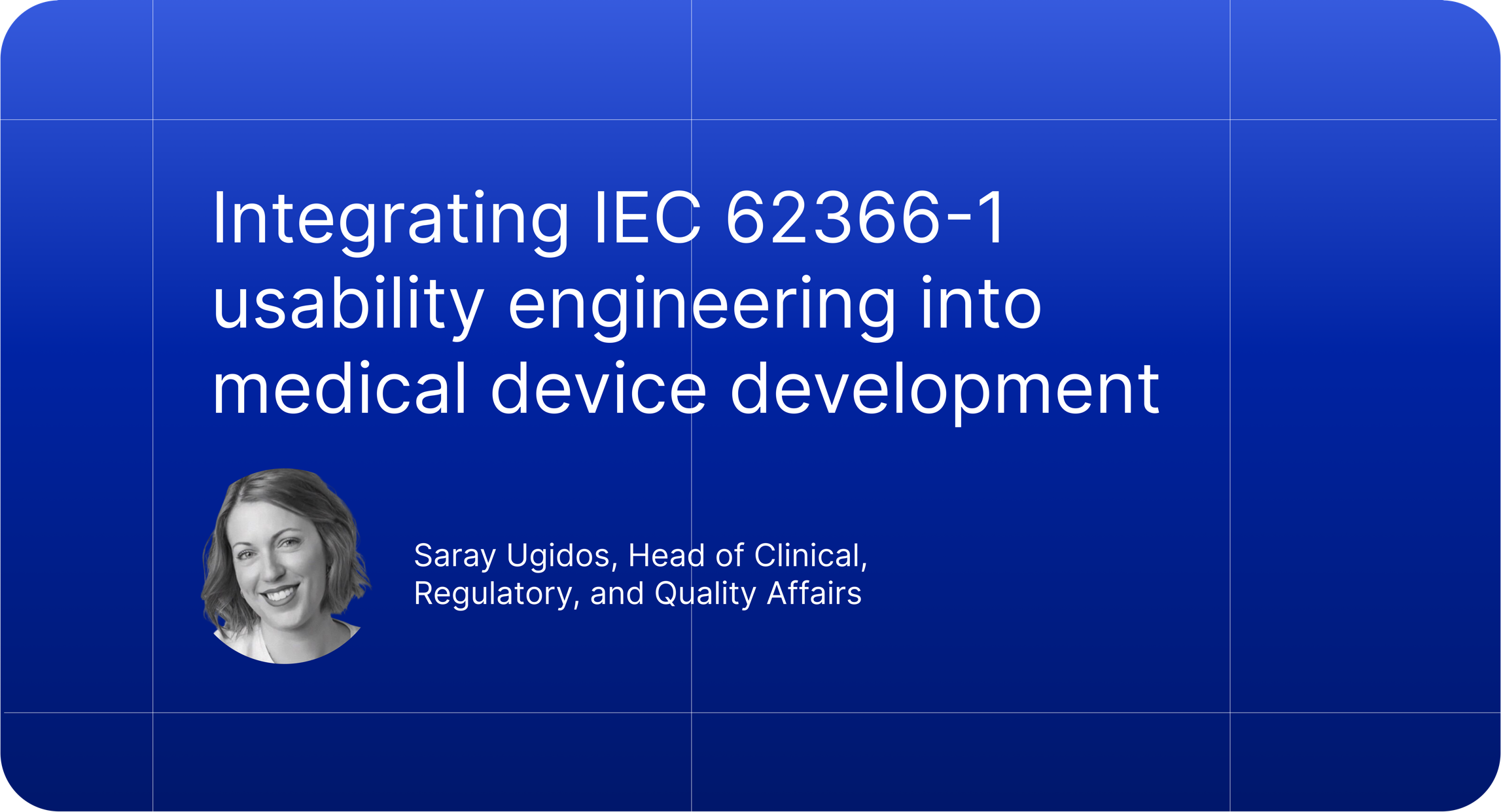The implementation of IEC 62366-1 usability engineering is essential for developing Software as a Medical Device (SaMD) and Digital Therapeutics (DTx). Systematic application of usability engineering principles enables these digital health products to fulfill stringent regulatory standards, significantly enhance patient safety, boost user engagement, and optimize therapeutic outcomes. A structured IEC 62366-1 approach ensures that SaMD and DTx solutions achieve superior clinical effectiveness and strong market acceptance.
Why IEC 62366-1 is essential for SaMD and DTx development
IEC 62366-1 is the leading international standard focused specifically on the usability engineering of medical devices, including digital health products such as SaMD and DTx. It offers a clear framework for identifying, analyzing, and mitigating usability risks and hazards arising from user interactions. By proactively addressing these risks through rigorous user testing and thoughtful interface design, we ensure the highest levels of safety and effectiveness for our digital health solutions.
Compliance with IEC 62366-1 aligns seamlessly with key regulatory requirements such as the European Medical Device Regulation (MDR) and Switzerland’s Medical Device Ordinance (MedDO). In combination with ISO 13485 for Quality Management Systems and ISO 14971 for Risk Management, this IEC standard is integral to our regulatory strategy for SaMD and DTx products, ensuring smooth and efficient regulatory approval.
Planning and user needs identification for digital health solutions
Effective usability engineering starts with meticulous planning. We define usability engineering plans that clearly outline objectives, methodologies, and timelines, ensuring full alignment with regulatory requirements and product development milestones.
Understanding user needs, contexts of use, and behaviors is critical to our IEC 62366-1 process. Our team employs in-depth research methods, including user interviews, contextual analyses, and task studies, to capture accurate user profiles and use scenarios.
These insights directly inform our design strategies, enhancing user interaction and significantly reducing the risk of usability errors.
Iterative design and formative evaluations for SaMD and DTx
Our approach emphasizes iterative user-centered design, crucial for successful digital health solutions. Through multiple rounds of formative evaluations with healthcare professionals, patients, and caregivers, we continuously refine product designs, interfaces, and workflows. This iterative method ensures that our solutions address actual user needs effectively, thereby optimizing usability, reducing errors, and enhancing patient outcomes.
Verification and summative validation aligned with IEC 62366-1
Verification activities confirm that usability requirements and risk control measures are accurately implemented into the final product. Our structured expert assessments and cognitive walkthroughs rigorously validate these implementations, proactively identifying usability issues that could compromise product safety or effectiveness.
Summative validation under IEC 62366-1 is essential for regulatory compliance and commercial success.
Comprehensive user testing in realistic, simulated environments generates the robust evidence required to support regulatory filings and ensure readiness for market launch.
Practical application of IEC 62366-1 for SaMD and DTx
In a DTx solution that delivers cognitive behavioral therapy via a mobile app, usability gaps might emerge if interface elements are too complex for elderly users. In SaMD products that assist with insulin dosing, unclear dose confirmation steps can lead to serious safety risks. Applying IEC 62366 ensures these scenarios are anticipated, tested, and resolved before launch.
For products that include companion apps, each screen, prompt, and feedback loop must support users under realistic conditions. The principles of IEC 62366 guide these design decisions and help demonstrate that the product is suitable for its intended audience.
Strategic advantages of IEC 62366-1 in digital health
Early adoption of IEC 62366-1 usability engineering provides numerous strategic benefits. It accelerates regulatory approvals, enabling faster entry into markets such as the EU, Switzerland, and the US. Additionally, digital health products designed with a superior usability experience have greater adoption rates among clinicians and patients, directly impacting clinical outcomes and market acceptance positively.
From an economic perspective, addressing usability concerns early significantly reduces development costs by minimizing the need for late-stage design changes and post-market revisions. Our usability-driven strategy ensures that products stand out in the marketplace through superior user engagement and satisfaction.
Expertise in IEC 62366-1 for digital health
Our specialized human factors engineering team offers deep expertise aligned with IEC 62366-1, specifically tailored to SaMD and DTx. Our multidisciplinary collaboration across user experience design, regulatory compliance, clinical validation, and quality assurance ensures that our digital health solutions meet all necessary usability, safety, and performance standards.
Integrating IEC 62366-1 usability engineering into your SaMD and DTx development processes is a strategic advantage that ensures enhanced patient safety, clinical efficacy, and sustained market success.
Connect with our team to discover how we can support your next digital health initiative.

